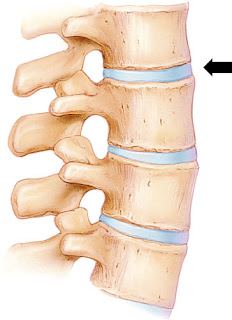
ScienceDaily (Aug. 1, 2011) — Every year, millions of people contend with lower back and neck discomfort. With intent to ease their pain, Cornell University engineers in Ithaca and doctors at the Weill Cornell Medical College in New York City have created a biologically based spinal implant that could someday spell relief for these countless sufferers.
Lawrence Bonassar, Ph.D., associate professor of biomedical engineering and mechanical engineering, and Roger Härtl, M.D., associate professor of neurosurgery at Weill Cornell Medical College and chief of spinal surgery at NewYork-Presbyterian Hospital/Weill Cornell Medical Center, have created bioengineered spinal discs that have been successfully implanted and tested in animals.
The other scientists on the paper are Robby Bowles, Cornell Ph.D. '11, and Harry Gebhard, M.D., of Weill Cornell Medical College.
Their research will be published online Aug. 1, 2011 in the Proceedings of the National Academy of Sciences.
"We've engineered discs that have the same structural components and behave just like real discs," says Bonassar. "The hope is that this promising research will lead to engineered discs that we can implant into patients with damaged discs."
Each year, 40 percent to 60 percent of American adults suffer from chronic back or neck pain. For patients diagnosed with severe degenerative disc disease, or herniated discs, neurosurgeons perform surgery called discectomy -- removing the spinal disc -- followed by a fusion of the vertebrate bones to stabilize the spine. In spite of the surgery, the patient's back will likely not feel the same as before their injury.
NOTE: To read the entire article, click on the title above.
No comments:
Post a Comment